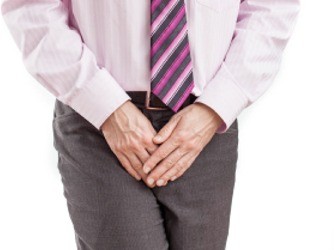 Not every lump in the scrotum is testicular cancer – in fact other causes are more likely. Cancer Research UK estimates that less than four in every 100 testicular lumps are testicular cancer.
Not every lump in the scrotum is testicular cancer – in fact other causes are more likely. Cancer Research UK estimates that less than four in every 100 testicular lumps are testicular cancer.
However, any lumps, swellings or changes to the testicles should always be checked out by a doctor.
Types of Testicular Lumps & Swellings
The four main types of testicular lumps and swellings are:
- varicocele, a swelling caused when veins in the scrotum become dilated (enlarged): varicoceles affect about one in seven men, usually becoming noticeable after puberty
- hydrocele, a swelling caused by an accumulation of fluid around the testicle: hydroceles are found in one or two percent of newborn boys, and also occur in older boys or men after an injury or infection.
- epididymal cyst, a lump caused by an accumulation of fluid in a coiled tube behind the testicles, called the epididymis: epididymal cysts can develop at any age, but are most common in middle-aged men, affecting one in three
- spermatocele – an epididymal cyst that contains sperm
- testicular torsion, a sudden painful swelling caused by a testicle becoming twisted. The blood supply to the testicles is interrupted and immediate treatment is vital. An uncommon condition, affecting one in every 4,000 males every year, testicular torsion usually develops in boys aged 13-17, but can also occur in men in their 20s.
Varicocele
The veins that drain blood away from the testicles can become varicose, forming a varicocele that feels like a bag of worms at the top of the affected testicle. The veins may be tender to the touch, and the testicle may ache with a drawing, dragging sensation. In the short term, wearing supportive pants or a jock strap will help. In moderate to severe cases, an operation to remove the varicose veins is recommended.
Hydrocele
Causes of a Hydrocele: The testicle is surrounded by two layers of membrane called the tunica vaginalis. This usually has a thin film of fluid between the membrane layers. An accumulation of this clear fluid, which is caused by its poor absorption, is called a hydrocele. A secondary cause of a hydrocele can be inflammation.
Symptoms of Hydrocele: A hydrocele usually (but not always) occurs on one side only – mainly in front of the testis, where it causes a lump that feels like a small, fluid filled balloon in the scrotum. Smooth and varying greatly in size, hydroceles, are normally both painless and harmless, although larger hydroceles can be uncomfortable because of their size and weight.
Diagnosis
Symptoms of a hydrocele can easily be distinguished from testicular cancer, as a hydrocele is soft and squidgy, where a testicular cancer feels rigid and rough. As the fluid in a hydrocele is clear, light shone through it may be visible from the other side, however, the accumulation of fluids can be formally diagnosed through ultrasound.
Treatment
Hydroceles in newborn babies often disappear on their own during the first year or two. If the hydrocele in older males is not surgically removed, it may continue to grow. The hydrocele fluid can be drawn off, which is a less invasive procedure than surgical removal, but the hydrocele may return.
The injection of a solution following aspiration of the hydrocele fluid (called sclerotherapy), can increase success rates, but in many patients the hydrocele will recur.
The general recommendation is that a hydrocele should be surgically removed, in a procedure called hydrocelectomy. There are two surgical techniques available, dependent on the size of the hydrocele and the thickness of the membrane wall. Both aim to reduce the hydrocele sac so it does not reoccur.
A hydrocele will not generally affect fertility, although it could be indicative of other significant factors.
Epididymal or spermatocele cysts
These are the most common causes of a swelling in the scrotum, and can reach several centimetres in size. Although they are generally not painful, larger ones may be uncomfortable.
Finding a painless, cystic accumulation above the testicle (sometimes described as a third testicle) is usually indicative of an epididymal cyst, but confirmation with an ultrasound is recommended. Large, uncomfortable cysts should be surgically removed. Smaller cysts, or those which do not cause symptoms, are best left alone.
